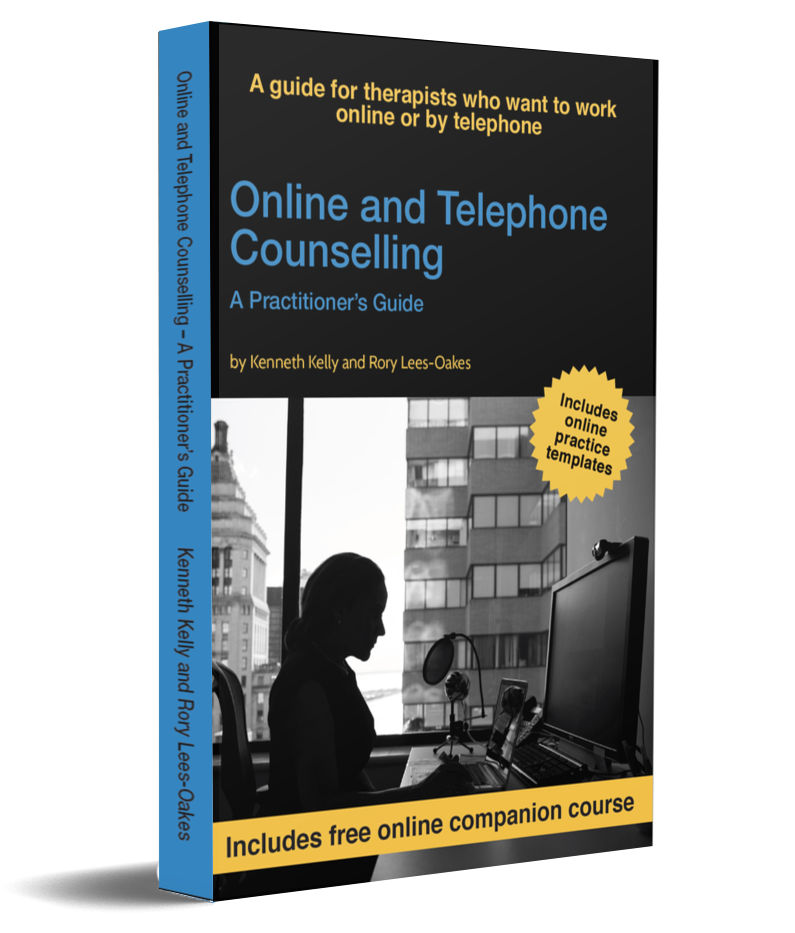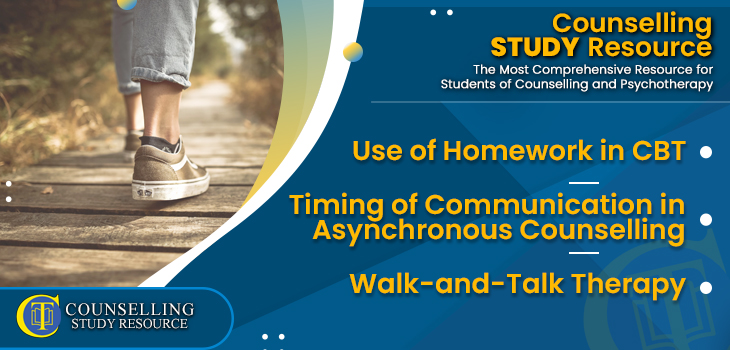187 – Walk-and-Talk Therapy
Use of Homework in CBT – Timing of Communication in Asynchronous Counselling
Episode 187 of the Counselling Tutor Podcast opens with Rory Lees-Oakes and Ken Kelly talking about the strengths and weaknesses of Cognitive Behavioural Therapy (CBT) and in particular the use of homework in this popular modality. ‘Digital Counselling Revolution’ then looks at asynchronous therapy – specifically the timing of communications when working in this way. Last – in ‘Practice Matters’ – Rory speaks with counsellor and tutor Simon Heath about ecotherapy, in particular walk-and-talk therapy.
Use of Homework in CBT (starts at 1.45 mins)
The term ‘homework’ may carry negative connotations of school and its academic pressures for some people, but CBT homework is intended as a supportive part of the therapy that both increases its effectiveness and promotes client autonomy (through encouraging clients to ‘become their own therapist’ between and after sessions).
Rory describes the origins of CBT, describing how US psychologist Albert Ellis developed Rational Emotive Behavioural Therapy (REBT) – the earliest form of cognitive-based psychotherapy – in the 1950s.
As a young man, Ellis lacked the confidence to talk to women of his own age. He decided to try to tackle his shyness by going to Central Park in New York and making himself talk to 100 women. This helped him become more confident about talking to women and he managed to alter what he saw as his irrational fear.
Ellis’s experiment was an early example of CBT homework, which may focus on the client challenging their perception. Ken and Rory discuss other examples of such experiments and other possible types of CBT homework.
They also compare and contrast the non-directive modality of person-centred therapy and the active-directive CBT. CBT has a strong base in research, helped by its measurability (due partly to the setting of a specific goal for therapy).
You can download a handout on CBT session structure and use of homework here. And the CSR has lots of other resources on CBT – simply go here.
Timing of Communication in Asynchronous Counselling (starts at 15.00 mins)

BESTSELLER
Online & Telephone Counselling Book
Available in Paperback and Kindle
Includes FREE COMPANION COURSE that you can do online to underpin and strengthen your learning
Asynchronous communication is when you send a message without expecting an immediate response – for example, using text, social media, email or online forums. Email and text therapy are forms of counselling that use asynchronous communication.
It is easy to think that it’s fine to send an email at any time of day or night, but it is good practice to contract with the client on when you will do this – partly to avoid them being left emotionally ‘open’ for a long period after sharing their intimate thoughts and feelings by message, and partly to reduce the chance of them experiencing the black-hole effect.
The latter phenomenon was named by American psychologist John Suler (1997); it refers to the uncomfortable phenomenon of sending an email and not knowing whether or not it was received and read.
Ken and Rory talk about the importance of clear contracting for email/text therapy; the skills needed; and how to work safely, ethically and professionally in this way.
Professional training in working online is vital, and you may wish to consider taking our Online and Telephone Counselling Certificate course. The course exceeds 80 hours of guided learning, and the learning outcomes are mapped to the BACP’s 2021 competencies for telephone and e-counselling.
Most of the course is self-directed learning via online lectures and resources; this means that you can work at your own pace, and complete the course with no external time pressure.
Walk-and-Talk Therapy (starts at 27.15 mins)
Rory talks to Simon Heath, who has recently recorded a lecture on Ecotherapy for our Counsellor CPD library (which offers hundreds of hours of on-demand lectures, training and resources to support the continuing professional development of qualified practitioners).
Simon explains that the term ‘ecotherapy’ encompasses a range of individual and group therapeutic activities, including:
- walk-and-talk counselling
- gardening therapy
- forest bathing
Simon’s lecture focuses on walk-and-talk therapy and provides an introductory guide to things you need to consider before working with clients via ecotherapy, including:
- completing risk assessments
- contracting and other paperwork
- how to deal with unexpected events outdoors
- balancing client autonomy with the duty of care
Simon touches on the value of the sense of connectedness with nature, the role of the environment as a second therapist, and how the weather affects the nature of the therapeutic relationship.


